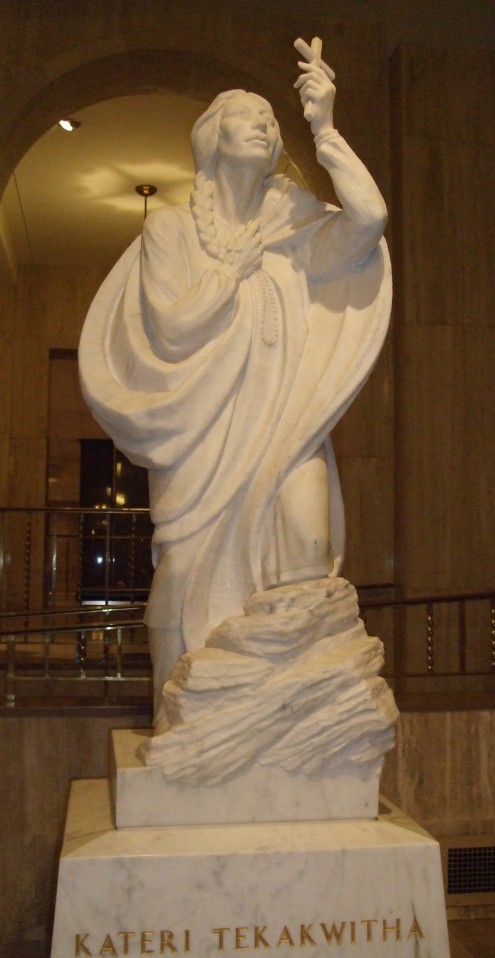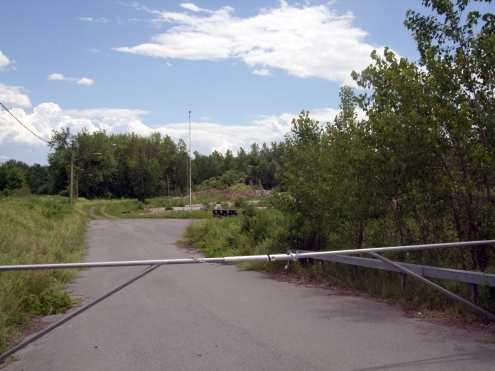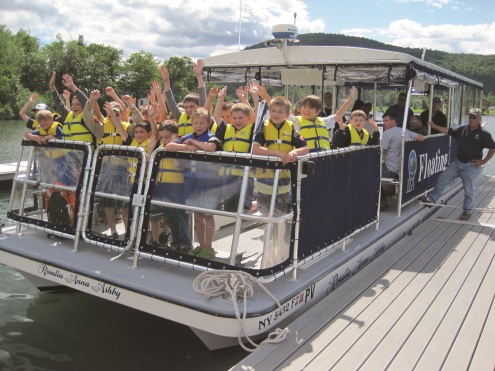
Wall lettuce (Mycelis Muralis), one of the newer invasive species on a watch list for the Adirondacks, is now growing off of Rt. 9L near Dunham’s Bay in Lake George. The Lake George Association is gathering data to assess the spread of the species in the Watershed. Property owners who believe that this plant is growing on their land are asked to contact the LGA at 668-3558 or info@lakegeorgeassociation.org.
An invasive terrestrial plant, Mycelis muralis, commonly known as wall lettuce, has been identified growing alongside 9N near Dunham’s Bay in Lake George, the Lake George Association announced today. Wall lettuce is one of several newer species that was placed on a watch list earlier this spring by the Adirondack Park Invasive Plant Program. This is the first time that the plant has been known to exist within the Lake George Watershed, although it has likely been growing for a few years without having been identified. Citizens are asked to contact the LGA if they believe this plant may be growing on their property, so that the organization can assess the spread of its growth.
Wall lettuce is a slender herb with a smooth 3- foot stem that exudes a milky juice when broken. Leaves grow primarily near the base of the plant. The leaves are 2½ to 7 inches long and 1 to 3 inches wide. They are smooth with broad, terminal segments and earlike, clasping flanges at the leaf base. Tiny yellow flowers, with 5 strap-shaped petals, form rounded shapes at the very top of the plant. The plant dies back after flowering, and can act as either an annual or biennial.

A closeup shot of a wall lettuce leaf.
Due to a lack of natural predators, diseases and parasites, invasive species like wall lettuce can quickly become pervasive. When they do, these species can negatively impact the ecological balance of Lake George by out-competing native plants for light, nutrients, and space. Plants like purple loosestrife and common reed can alter hydrological processes, and can change drainage patterns, soil water holding capacity, and resistance to erosion.
The LGA ‘s Director or Education, Emily DeBolt, first noticed this new plant when she was working on a native landscaping project near Dunham’s Bay last year. The odd yellow flower was growing just off of Rt. 9L. She shared pictures of the plant with Dan Spada with the Adirondack Park Agency (APA), but at first they were unable to confirm the plant’s identity. Still suspicious, Ms. DeBolt photographed a larger plot of the plant this past Friday and sent the photos to Mr. Spada again. This time Mr. Spada determined that the plant was in fact wall lettuce; Steve Young, the head botanist with New York State’s Natural Heritage Program, confirmed the identification.
Jim Sears, who also lives near Dunham’s Bay, attended the LGA’s native plant workshop this past Saturday, and brought photographs of a yellow weed he has been struggling to remove on his property, explaining that it spread rapidly this year, and has been present for several years. Ms. DeBolt identified this plant as wall lettuce as well.
“Purple loosestrife, phragmites, shrubby honeysuckle, and Japanese knotweed are invasive species that have been targeted for management activities in the Adirondacks for several years now,” said Ms. DeBolt. “We already have more than our share of Oriental bittersweet, burning bush, and Japanese barberry around Lake George – but wall lettuce is one that I was not familiar with,” she said. “Additional newer species that are we need to be on the lookout for as they start to make inroads into Adirondacks are swallowwort, yellow iris, Japanese stiltgrass, flowering rush, and lesser celandine. We need to keep our eyes out for these as well,” she said.









